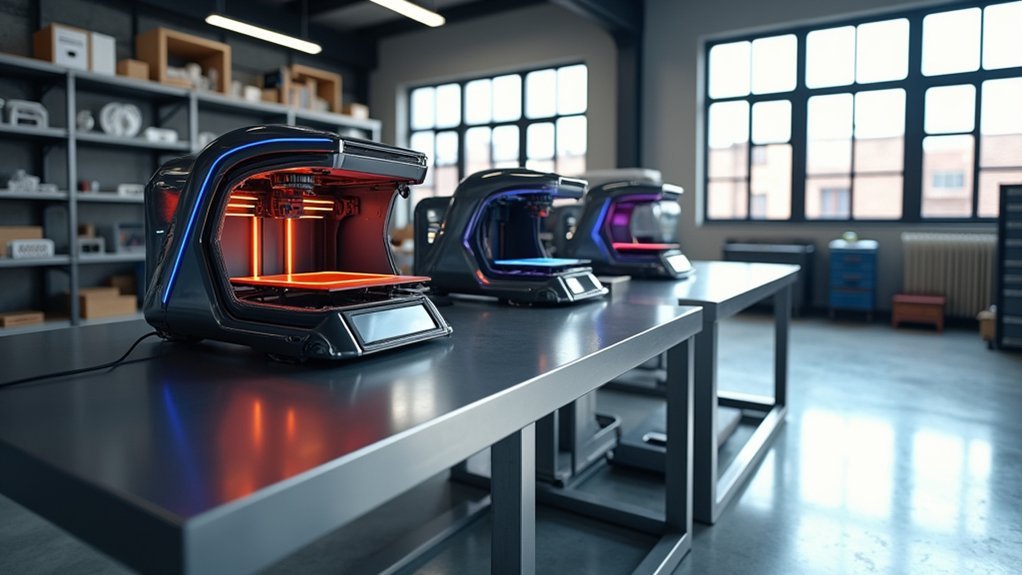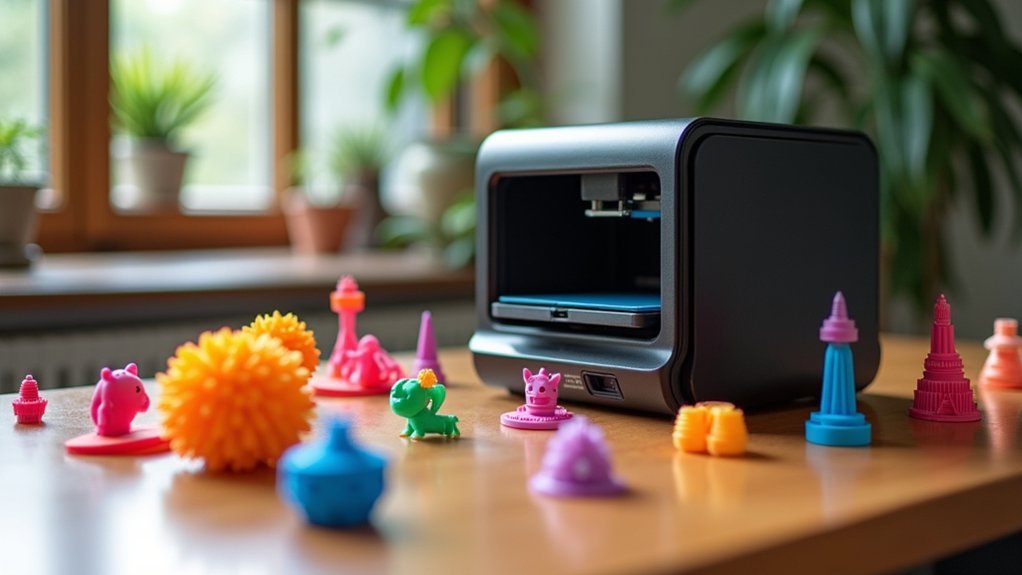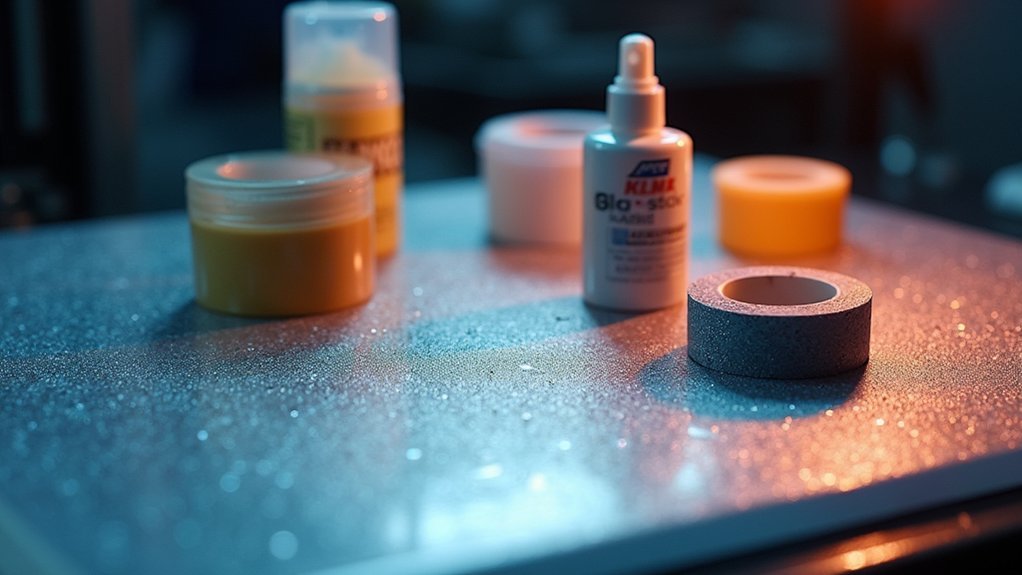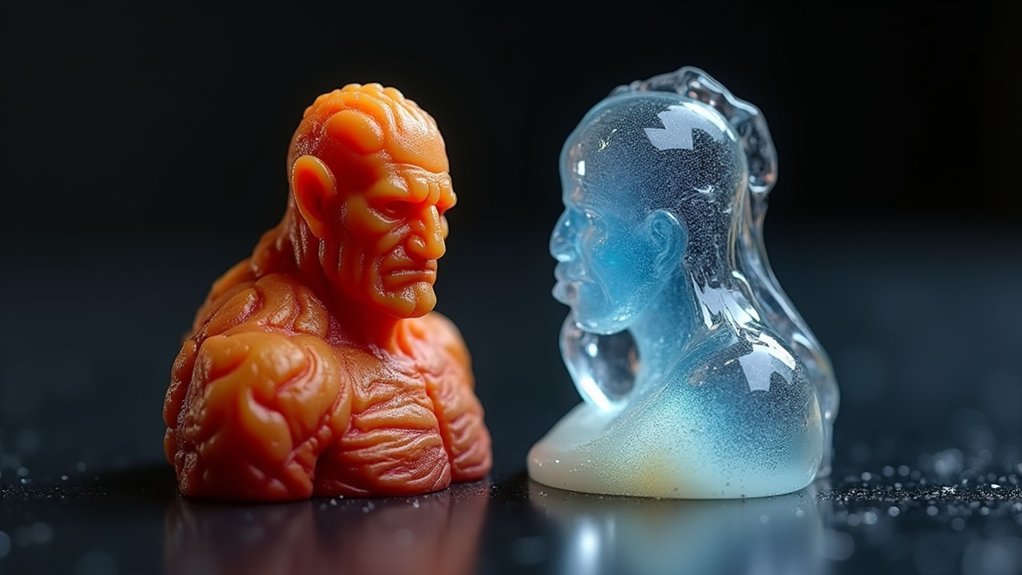You’ll find the top three on-demand industrial 3D printing solutions are Makerverse, which offers AI-powered manufacturing with ISO-certified suppliers and 1-3 day delivery; 3D People UK, providing extensive prototyping across FDM, SLA, and SLS technologies with instant quoting; and 3DPRINTUK, specializing in low-volume batch production using advanced SLS and MJF processes. Each platform delivers rapid turnaround times, maintains strict quality control, and protects your IP through confidentiality agreements. Discover how these services can transform your manufacturing approach below.
Makerverse – Ai-Powered Manufacturing Platform With Certified Supplier Network

Innovation meets efficiency when you need reliable 3D printing services, and MakerVerse delivers exactly that through its AI-powered manufacturing platform.
You’ll connect with certified suppliers who maintain ISO 9001 and ISO 27001 standards, ensuring industrial-quality parts for aerospace, automotive, and medical applications.
The platform’s streamlined online quoting process makes ordering simple: upload your CAD file, receive AI evaluation, and select from transparent pricing options with detailed cost breakdowns.
You’ll access diverse manufacturing technologies for both rapid prototyping and production runs, with prototypes delivered in 1–3 days.
MakerVerse’s quality assurance includes automated DFM reports and digital inspection records, giving you confidence in prototypes and production parts that meet tight tolerances across demanding industries.
3D People UK – Industrial-Grade Prototyping With Multi-Technology Capabilities
Versatility defines 3D People UK’s approach to industrial manufacturing, where you’ll find extensive prototyping solutions without minimum order constraints.
Their industrial-grade printers utilize multiple additive manufacturing technologies, including Fused Deposition Modeling, Stereolithography, and Selective Laser Sintering, enabling diverse material options from PLA to engineering resins.
You’ll appreciate their instant quoting tool that provides immediate pricing estimates when you upload your 3D models.
This 3D printing service delivers rapid prototypes within 2-4 days, while custom parts for small-batch production complete in 1-2 weeks.
Their printing technologies support prototyping to production workflows, maintaining rigorous quality control throughout the process.
You’ll also benefit from their confidentiality agreements protecting IP-sensitive designs, making them ideal for industrial applications requiring both speed and discretion.
3DPRINTUK – Specialized Low-Volume Batch Production for Engineering Applications

When you need more than standard prototyping, DPRINTUK delivers specialized low-volume batch production that bridges the gap between single prototypes and full manufacturing runs.
Their online 3D printing service excels at producing 10-100 functional parts without minimum order requirements, making it perfect for engineering applications requiring flexibility.
You’ll benefit from rapid turnaround times—prototypes arrive in 1-3 days, while low-volume production takes just 5-10 days.
DPRINTUK employs advanced technologies including Selective Laser Sintering (SLS) and Multi Jet Fusion (MJF) to guarantee industrial-quality manufacturing standards.
Their strict in-house quality control practices ensure consistent reliability across all parts.
You can quickly obtain free quotes through their online portal, receiving detailed cost estimates based on your specific project requirements for efficient production planning.
Frequently Asked Questions
Is There a 3D Print on Demand?
Yes, you’ll find numerous 3D print on-demand services available. You can upload your CAD files to platforms like MakerVerse or Craftcloud, receive instant quotes, and get parts printed quickly without maintaining inventory.
What Is the Best Material for 3D Printing Industrial Use?
You’ll find Nylon PA12 performs best for most industrial applications due to its exceptional strength and flexibility. For high-temperature needs, choose ULTEM materials, while engineering resins work perfectly for precision parts.
What Is the 45 Degree Rule for 3D Printing?
You should keep overhangs under 45 degrees from vertical to avoid needing support structures. This rule prevents sagging and print failures while reducing material waste and post-processing time in your prints.
Is There a High Demand for 3D Printing?
You’re witnessing unprecedented demand for 3D printing as industries embrace rapid prototyping and customized production. The market’s expected to exceed $40 billion by 2025 with 25% annual growth rates.





Leave a Reply